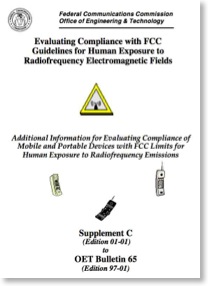WashPost "FCC considers whether to study cellphone radiation"

A”phantom” often used for SAR measurements.
Simulated cavity is filled with special liquid to simulate body’s electromagnetic qualities.
Probe is inserted in simulated head to measure electromagnetic fired resulting from cell phone emissions and focusing or diffusion by body shape and its physical parameters such as conductivity.
Cell phone tested is under body cavity and can’t be seen in this photo.
(FCC also permits computer calculations of SAR that consider body shape and parameters.)
Last night the Washington Post posted an article on its web site that appeared in today’s print edition with the above title. The Post’s Cecilia Kang wrote:
The Federal Communications Commission is seeking to study whether it needs better guidelines to protect people from cellphone radiation, a question it hasn’t posed in 15 years…
The debate is sure to draw heavy interest. The deep-pocketed wireless industry opposes changes to current federal rules. Health advocates have argued that the government has ignored safety concerns raised by some scientists.
Studies have been split on the matter. Some have indicated that cellphone use poses no risk to humans.
Ms. Kang points out correctly that the 5 commissioners must vote to start any reexamination, something a little in doubt due to the cellular industry’s likely opposition and the degree that the current commissioners have focused on meeting the cellular industry’s spectrum demands - virtually ignoring former “top dog”- the broadcasting industry - in the process.
Historically, though, FCC has never really picked an RF safety standard. Since FCC is not a health and safety agency it has always deferred to a troika of such agencies (Environmental Protection Agency, Occupational Safety and Health Administration, and National Institute of Occupational Safety and Health) to recommend specific protection standards for the public and for occupational workers. FCC has consistently used standards that were proposed by the 3 agencies at the end of its rulemaking process. (Amusingly,a decade or 2 ago the Defense Department was embarrassed over the difference between its standard for exposure of GIs and the FCC occupational standard and sought a place at the table as a 4th “health and safety agency” so it could moderate FCC’s positions even though they did not legally apply to the exposure of GIs. FCC wisely rejected giving DoD an inside role with off the record participation as a “health and safety agency”.)
Readers are reminded of an earlier post on the “OETB65C problem” that the cellular industry no doubt would prefer remain “under the carpet”. While the Commission’s rules specify human exposure limits and set as SAR limit of 1.6 W/kg for the head, 47 CFR 2.1093, some of the key details for measuring the SAR and interpreting the rule is given in the more obscure OET Bulletin 65, Supplement C, “Evaluating Compliance with FCC Guidelines for Human Exposure to Radiofrequency Electromagnetic Fields:
Additional Information for Evaluating Compliance of Mobile and Portable Devices with FCC Limits for Human Exposure to Radiofrequency Emissions”, last revised in January 2001 - a time during the Bush 43 transition when it got little attention either within FCC or in the public and no notice and comment.
On p. 41-2 of OETB65C it states,
.Body-worn operating configurations should be tested with the belt-clips and holsters attached to the device and positioned against a flat phantom in normal use configurations. ... Both the physical spacing to the body of the user as dictated by the accessory and the materials used in an accessory affect the SAR produced by the transmitting device. ...Body-worn accessories may not always be supplied or available as options for some devices that are intended to be authorized for body-worn use. A separation distance of 1.5 cm between the back of the device and a flat phantom is recommended for testing body-worn SAR compliance under such circumstances. Other separation distances may be used, but they should not exceed 2.5 cm
Thus the manufacturer can use body separation of up to 2.5 cm (about 1 inch) to show compliance without either providing a portable device holder or even telling the buyer that it must be kept an inch away from the body, i.e. do not put it in your pocket! A truly great loop hole!
So in an open rulemaking FCC adopted the SAR standard of 1.6 W/kg and in a mysterious OETB65C drafting process the OET staff gutted some key provisions! Now the cellular industry’s lawyers think it can decrease its liability if any adverse health effect is ever found by saying that its products meet all FCC rules. Isn’t liability decrease for key FCC regulatees a key FCC function? Or was it supposed to be the public interest? I keep forgetting.
In any case, hopefully FCC will allow a public review of RF safety standards for the first time since 1996 and will avoid the transparency problems associated with the drafting of the current OETB65C by seeking either including key provisions in the rulemaking or asking for public comment on a draft.




![Validate my RSS feed [Valid RSS]](valid-rss-rogers.png)

